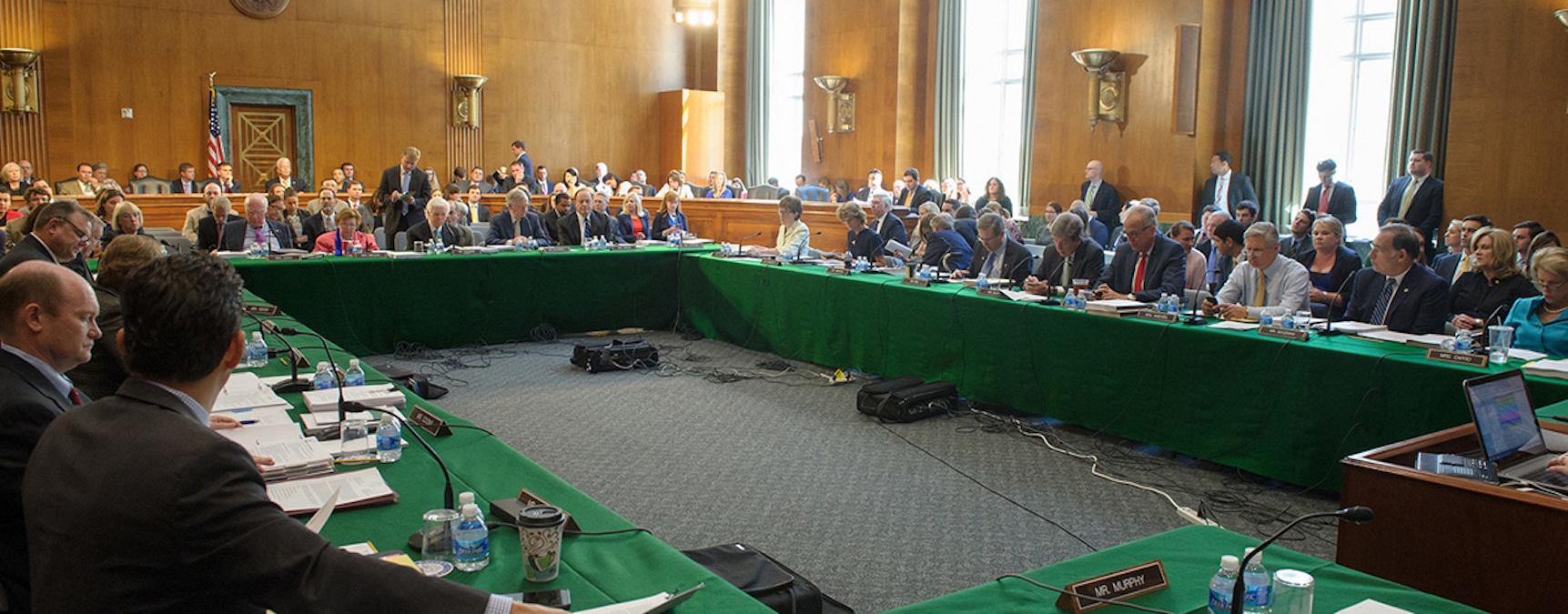What Congress’s 2023 Spending Package Means for Climate and Energy at Home and Abroad

 Why you can trust us
Why you can trust us
Founded in 2005 as an Ohio-based environmental newspaper, EcoWatch is a digital platform dedicated to publishing quality, science-based content on environmental issues, causes, and solutions.
In 2021, President Joe Biden promised that the U.S. would spend $11.4 billion each year by 2024 to help poorer nations transition to renewable energy and adapt to the impacts of the climate crisis.
So far, however, U.S. lawmakers have not backed up that pledge. The latest spending allocations announced by Congress Tuesday morning included only $1 billion for international climate aid, despite the fact that the U.S. is the greatest historical contributor to the climate crisis.
“The U.S. has promised much in terms of climate finance over the years but it’s failed to deliver on many of these promises,” Power Shift Africa founder and director Mohamed Adow said, as The New York Times reported.
When Biden made his pledge at the United Nations General Assembly, he was promising to bolster an already expired promise from wealthy nations to provide $100 billion a year in climate finance to poorer nations by 2020, as Reuters reported at the time.
“The best part is, making these ambitious investments isn’t just good climate policy, it’s a chance for each of our countries to invest in ourselves and our own future,” Biden said.
It seems U.S. lawmakers don’t agree. The meager $1 billion was part of an omnibus spending bill allocating $1.7 trillion to fund the government through 2023, The Hill reported. The Senate Committee on Appropriations published the text early Tuesday, and lawakers are set to vote on it before Friday, when the current funding resolution expires, E&E News explained.
On a domestic level, the spending package does include some climate and environment wins, according to The Hill. These include:
- $40.6 billion for U.S. communities recovering from extreme weather events like drought, hurricanes, flooding and wildfires, including $1 billion for Puerto Rico to rebuild its electric grid, according to E&E News.
- More than $10 billion for the Environmental Protection Agency (EPA), which is $576 million more than last year.
- $15.1 billion for the Interior Department, which is around four percent more than last year.
However, the small amount of international climate aid reflects a broader pattern from U.S. lawmakers, The New York Times pointed out. While in office, former President Barack Obama promised $3 billion to the Green Climate Fund, a UN-backed mechanism to channel adaptation and mitigation money towards developing nations. Congress only ever provided a third of that. The current spending bill sends the fund exactly $0.
Democratic legislators largely blamed Republicans for the small amount of aid. Indeed, Republicans on the Senate Appropriations Committee released a statement in which they touted the package for rejecting “radical environmental and climate policies.”
“Congress just bankrolled a defense bill that was $45 billion bigger than the president requested, but we failed to provide a penny to meet our commitments to the Green Climate Fund — a step that would truly help us defend our country and our planet from chaos and instability,” Democratic Massachusetts Senator Edward J. Markey said, as The New York Times reported.
However, activists say it undermines the U.S. credibility as a global climate leader if the executive branch can’t follow through on international funding commitments. International climate finance was a major sticking point at the most recent UN COP27 climate conference. Beyond the pending $100 billion a year by 2020, developing countries wanted an additional fund to help with the inevitable losses and damages caused by the climate impacts it is too late to prevent. The talks did conclude with the creation of a loss and damage fund, which the U.S. supported, according to The New York Times.
White House National Security Council spokeswoman Saloni Sharma said the administration had also not abandoned its $11.4 billion climate adaptation and mitigation goal.
“We will continue to work with Congress to make achieving this goal in FY24 a reality,” she said, as The New York Times reported.
Biden’s domestic climate agenda also took some hits in the final spending package. Lawmakers allocated more than half a billion less than he had asked for in Energy Department spending for renewable energy and energy efficiency and around two billion less for the EPA, according to The Hill.
Subscribe to get exclusive updates in our daily newsletter!
By signing up, you agree to the Terms of Use and Privacy Policy & to receive electronic communications from EcoWatch Media Group, which may include marketing promotions, advertisements and sponsored content.

 233k
233k  41k
41k  Subscribe
Subscribe 




